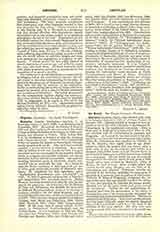

Deharbe, Joseph, theologian, catechist, b. at Strasburg, Alsace, April 11, 1800; d. at Maria-Laach, November 8, 1871. He entered the Society of Jesus in 1817 and after teaching for eleven years at the Jesuit College at Brieg, Switzerland, he became in 1840 a missionary and catechist in Cothen. With Father Roh, S.J., he established at Lucerne in 1845 the Academy of St. Charles Borromeo. When in 1847 a persecution broke out against the Jesuits in Switzerland, Deharbe barely escaped with his life. After that he was chiefly engaged in giving missions in Germany. As a catechist in Cothen he felt very keenly the lack of a good catechism and was encouraged by his superior, Father Devis, to compose a serviceable textbook, but always hesitated, feeling himself incompetent. His superior, knowing Deharbe’s spirit of obedience, simply commanded him to undertake the task. As a model he took the Mainz catechism of 1843 and made use also of other good textbooks, notably of Bossuet’s catechism. He completed his first catechism, called “Katholischer Katechismus oder Lehrbegriff”, in 1847. In 1848 it appeared anonymously at Ratisbon and immediately won universal approval. Bishop Blum of Limburg introduced it officially into his diocese in the same year; the following year the Bishops of Trier and Hildesheim did likewise for their sees. In 1850 the Bavarian bishops resolved to introduce a common catechism for the whole kingdom, and accepted Deharbe’s catechism, which was then introduced in 1853. Other German dioceses adopted it as follows: Cologne, 1854; Mainz and Paderborn, 1855; Fulda, 1858; Ermland, 1861; Culm, 1863; Gnesen-Posen, 1868. At the same time it spread outside of Germany, in Switzerland, Austria-Hungary, and the United States. It was translated in 1851 into Magyar, then into Bohemian, Italian, and French; into Swedish and Marathi, 1861; into Polish and Lithu-anian, 1862; into English, 1863; into Slovenian, 1868; into Danish, 1869; and later repeatedly into Spanish and Portuguese. It was reintroduced into Bavaria in 1908; and it is still in use in most German dioceses, in Denmark and Sweden, in Brazil, Chile, East India, and in many schools of the United States. In a revised form, Austria adopted it in 1897. Deharbe himself prepared and published at Ratisbon four extracts of his first work, entitled: (I) “Katholischer Katechismus” (1847); (2) “Kleiner katholischer Katechismus” (1847); (3) “Anfangsgrunde der katholischen Lehre fur die kleinen Schuler” (1847); (4) “Kleiner katholischer Katechismus” (1849-50). According to Father Linden, S.J., Deharbe’s catechism possesses theological correctness, brevity of sentences, preciseness of expression, clearness, and good order; according to the same authority its defects consist in redundance of memory-matter, abstractness of expression, incomplete sentences. It is to Deharbe’s credit that in his catechism he preserved catechetical tradition, but abandoned the Canisian division, arranging the text-matter under chapters on Faith, Commandments, and Means of Grace. Deharbe’s catechisms have been frequently edited and revised. His other works, all published at Ratisbon, are: “Die vollkommene Liebe Gottes” (1855); “Erklarung des katholischen Kateehismus” (4 vols., 1857-64, fifth ed., 1880-); “Kürzeres Handbuch zum Religionsunterrichte” (1865-68, sixth ed., Linden ed., 1898).
FRANCIS L. KERZE

